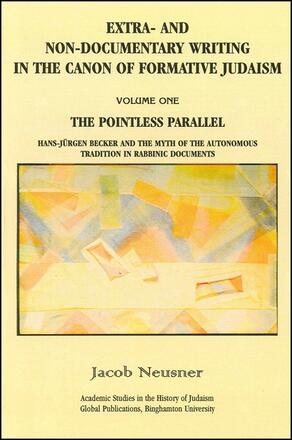
Extra- and Non-Documentary Writing in the Canon of Formative Judaism, Vol. 1
The Pointless Parallel: Hans-Jürgen Becker and the Myth of the Autonomous Tradition in Rabbinic Documents
Explores the canon of Rabbinic literature.
Description
Rabbinic literature in its formative age, from the Mishnah through the Bavli, ca. 100–600 c.e., is comprised by documents that relate to one another in three ways. First, they are autonomous and self-contained; second, they are connected with one another; and third, they are continuous with one another. Some point to the connections, in the form of parallel versions of sayings or stories, as evidence against the theory that the documents possess integrity.
Volume One addresses the contrary position as represented by the writings of three generations, the Goldberg-Schaefer-Becker group, of the German academic school of Rabbinic studies. That school holds that for antiquity there is nothing we may call "Judaism," a religious system realized in its canonical writings. Indeed, there are no timely documents, only diverse MSS variants of indeterminate location in time and space. This position rests on the myth of the autonomous tradition. Everyone knows that the same composition and even sizable composite may occur in more than one document of the canon of Rabbinic Judaism in its formative age, the first six centuries c.e. A given saying or story may find its way into two or three documents, exhibiting variations as it moves along. The implications of these parallels, which constitute traditions autonomous of any distinctive, determinate documentary setting, bear examination. In Volume One of Neusner's canonical compilations, these parallels make no point at all. They are random, trivial, and prove nothing.